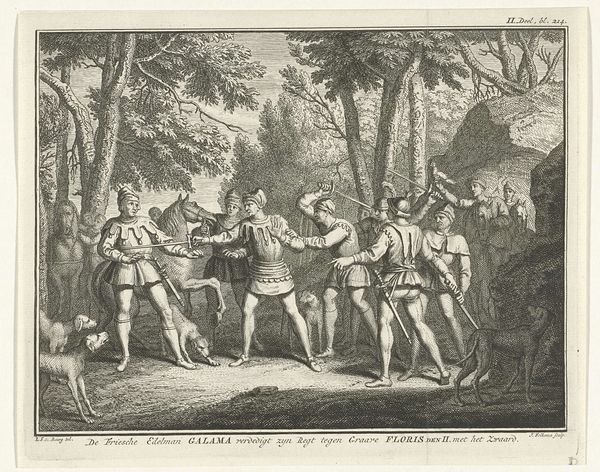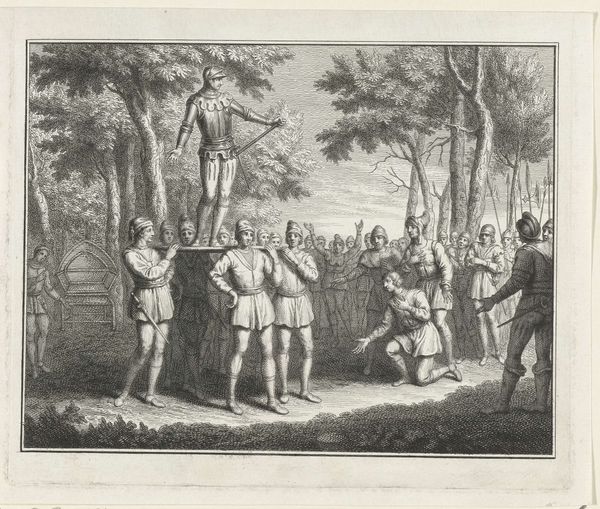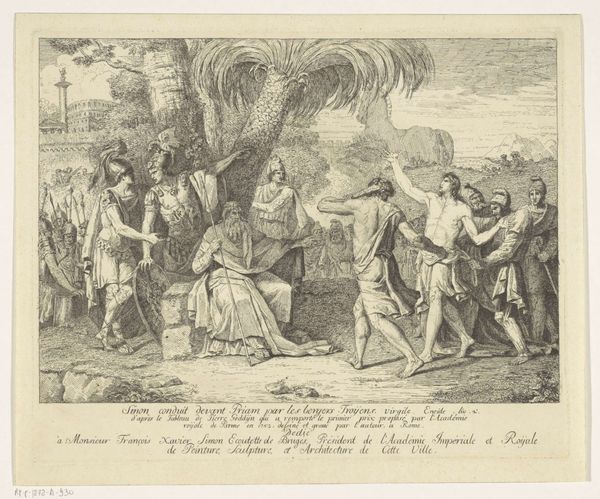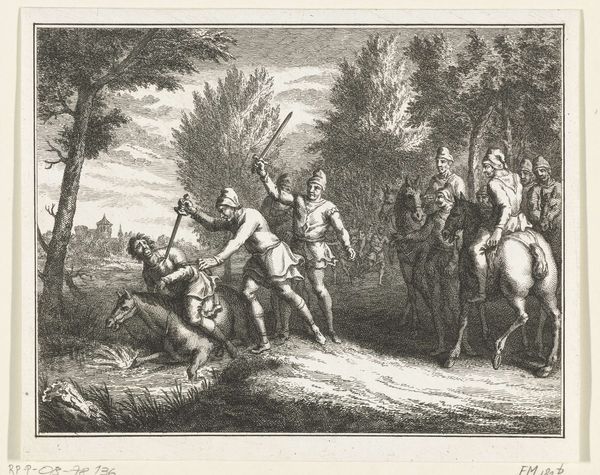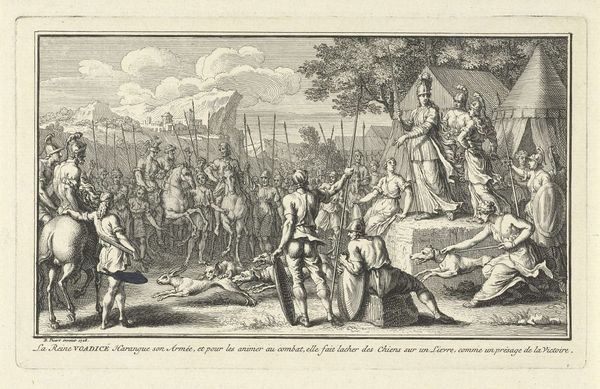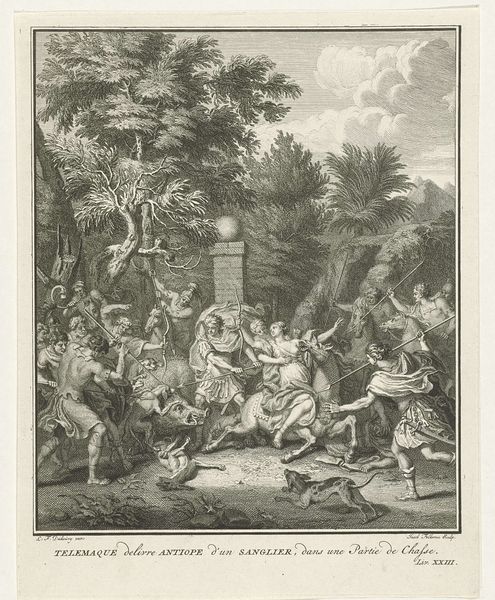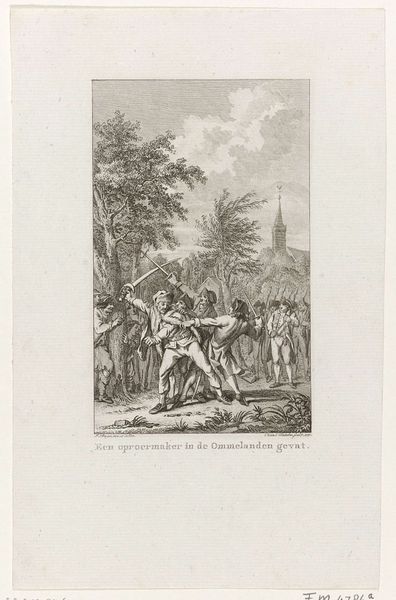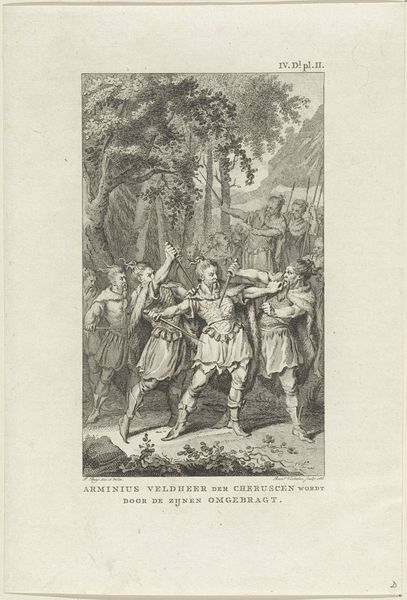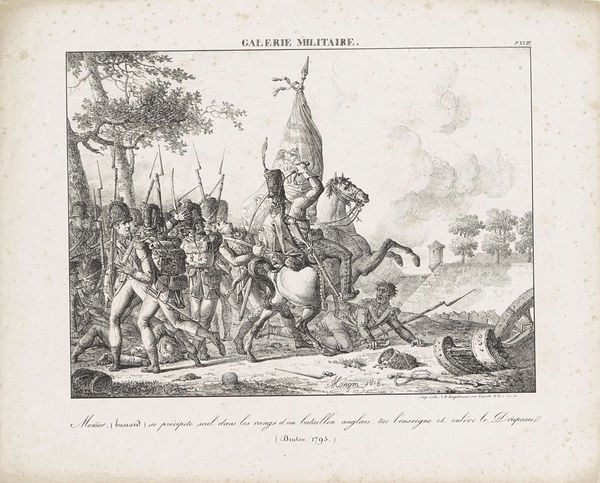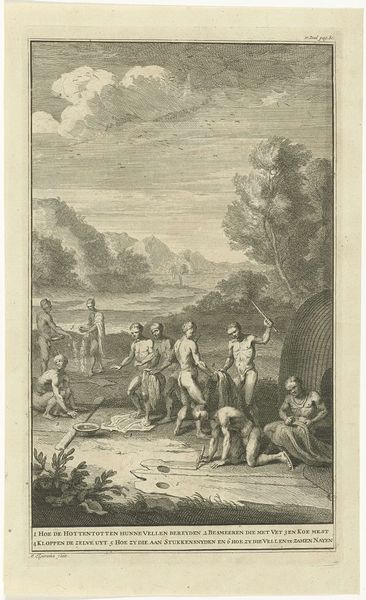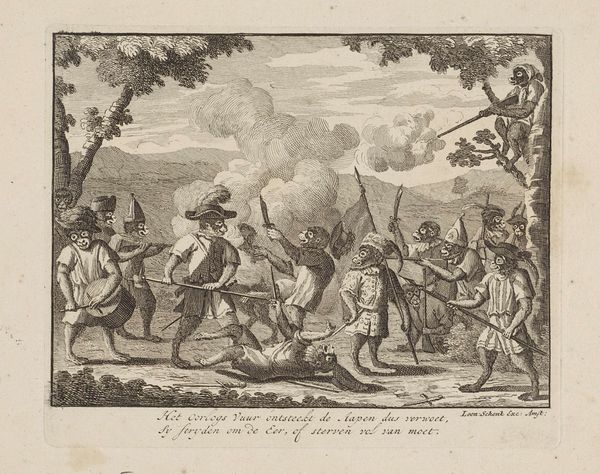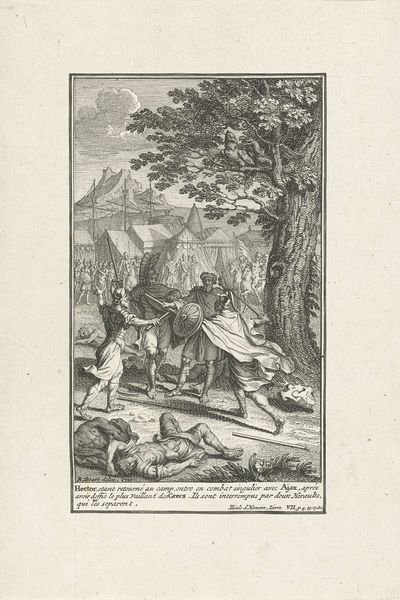
print, engraving
#
portrait
#
baroque
# print
#
old engraving style
#
history-painting
#
engraving
Dimensions: height 178 mm, width 204 mm
Copyright: Rijks Museum: Open Domain
Curator: Wow, that's intense! My first reaction is…grim. Like a historical freeze-frame of treachery. So much pent-up drama frozen in ink. What do you see? Editor: This engraving, made by Pieter Tanjé between 1747 and 1759, depicts the murder of Floris V, Count of Holland, in 1296. As a historical print, this work functions as a narrative tableau. Curator: Narrative, yes, exactly! You get this distinct feeling of "something happened here." And judging by the title printed at the bottom, “Moord op Floris V, 1296", it wasn't pretty. What a tale of betrayal etched in monochromatic tones. Editor: Absolutely. The event itself became a potent symbol in Dutch history. We can interpret it as speaking to anxieties around power, authority, and justice. This imagery presents clear ideological implications regarding the political landscape. Curator: See, that’s what’s cool—how an image like this can pack so much political weight. Looking at the victim impaled, the landscape bearing witness—it speaks to how violence imprints itself onto our memory, into our land. Plus, look at those rigid figures on horseback – they could easily embody repression of freedom. Editor: Indeed. And note how the artist positions Floris slightly lower than his murderers, accentuating a visual power dynamic reflecting the political subjugation being displayed. I also read the setting in terms of the tensions of civilization versus the "natural" world – a popular binary trope we must acknowledge when deconstructing images such as these. Curator: Oh, definitely. The trees seem almost menacing, sheltering the act, whispering secrets to each other. The Rijksmuseum truly has a treasure trove here, offering viewers much more than simply a window into the past. This piece asks questions, it screams. Editor: Precisely, and its ongoing dialogue speaks to power structures. Consider also the medium—print—allowing wide dissemination of this brutal event. A crucial piece for anyone studying sociopolitical currents running throughout art history. Curator: Right! So, next time you feel like jumping into the Wayback Machine of history—with all its messy human conflicts—just remember pieces like these. So stark. So telling. Editor: Absolutely. As both a reflection and a construction of its time, it encourages critical examination and intersectional awareness.
Comments
No comments
Be the first to comment and join the conversation on the ultimate creative platform.
